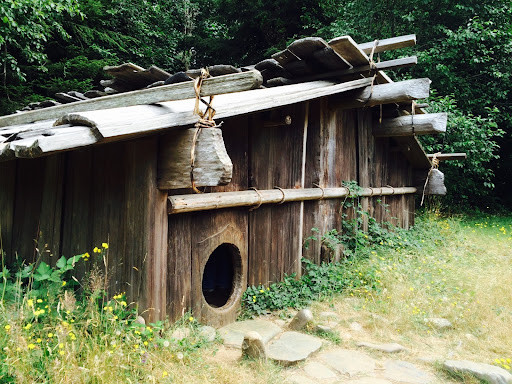Overview
Traditional Plank House Village: Resources, Engineering & Social Roles

Authors: Phil Albers Jr (Karuk) and Valentina Dimas
Tony Linwood (Artist for Handout)
Lesson partner: Rebecca Lowry, Humboldt County Office of Education
Grades: 4-5
Suggested Amount of Time: 2-3 class sessions
Curriculum Themes
- History
- Cultural Strengths
- Relationship to Place
Learning Goals
Increase understanding of:
- traditional living houses
- keys terms in plank house construction
- traditional villages and family dynamics
- the importance of community reputation
Lesson Overview
This unit teaches about the traditional living houses of the Indigenous people of Northern California, primarily the Karuk Yurok, Hoopa, Wiyot and Chilula Tribes. This is a basic overview and summary of the construction and societal makeup revolving around these traditional plank houses. Students will learn about the materials, process and some cultural aspects of plank houses. The lesson expands and applies that knowledge to traditional plank house villages. Activities include classroom discussions and a building project.
Teacher Background
This lesson is based on Traditional Ecological Knowledge passed down through generations of Indigenous people of Karuk, Yurok, Hoopa, Wiyot and Chilula ancestry. These teachings are upheld and continued today throughout the descendants of those peoples. Several Tribes in the Pacific Northwest are expanding their understanding and building of plank houses. The opinions in this lesson do not necessarily reflect the opinions of any listed Tribes or community members.

